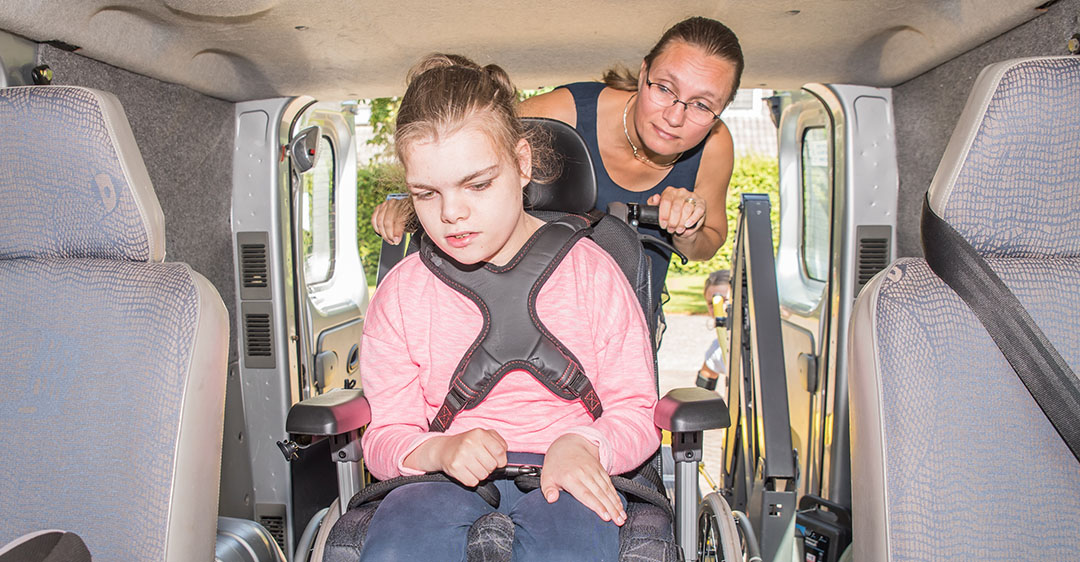Transportation is a related service as defined by 34 CFR §300.34(c)(16) of the IDEA regulations. It can include travel to and from school and between schools; travel in and around school buildings; and specialized equipment such as specially modified vans, buses, lifts, and ramps. A child’s individualized education program (IEP) team is responsible for determining both if transportation is required to assist a child with a disability to benefit from special education and related services, and how the transportation services should be implemented.
If a student needs specialized supports and services to be successful in the classroom, it’s likely they need similar services and supports during transport. Whether they are nurse services for medications or medical devices, sensory accommodations, or behavioral supports, if it’s required in the classroom, then the IEP should include a specific line allotting time (commonly categorized as either direct or consultation minutes/hours) and assigning responsibility for those services during transport. Typical needs might consist of a one-on-one aide, child safety restraint systems, sound protection, communication devices, a positive behavior reward system, occupational therapy services, a sensory toolkit and more.
A 2009 guidance document issued by USDOE clarifies that the child’s IEP team is responsible for determining if transportation is needed, and how the transportation services should be implemented. The team should consider the strategies that are most appropriate given a child’s disability, including the utilization of a lift-equipped vehicle, the addition of a monitor or aide, the use of bus stop monitors, and the use of positive behavioral support strategies on the bus. Once an IEP Team determines that a child with a disability requires special transportation arrangements or accommodations, including an aide for safety, the local district must provide these services.
The following questions are from the USDOE guidance document.
Q: What transportation services are available for students eligible for special education and related services under the IDEA?
A: Transportation is a related service and is defined in 34 CFR §300.34(c)(16). Transportation includes travel to and from school and between schools; travel in and around school buildings; and specialized equipment such as special or adapted buses, lifts and ramps, if required to provide special transportation for a child with a disability.
Q: If a child’s IEP identifies transportation as a related service to be provided to the child, what are strategies that can be used to provide that service?
A: Transportation as a related service may be provided through a variety of strategies. A child’s IEP Team should consider the strategies that are most appropriate given each individual child’s disability and needs.
The following examples of appropriate strategies may be helpful when IEP Teams consider how to provide transportation for children with disabilities:
General Education Bus Routes – School districts often provide door-to-door service for children with disabilities in a “small bus” vehicle that is separate from the school transportation used for other students. While this might be an appropriate strategy for supporting some children with disabilities, districts should explore options for integrating children with disabilities with nondisabled students, especially when the children with disabilities are in the same location and have the same schedule as children without disabilities. This option may require the utilization of a lift-equipped vehicle for the regular routes or the addition of a monitor or aide.
Using Aides on Buses – Many children with disabilities are able to ride the regular school bus with support provided by an aide who may be an instructional assistant or volunteer, based on State and local policy. Some LEAs also use other students to provide this service through a buddy system, based on State and local policy.
Bus Stop Monitors – For students who may need assistance with “going” to the bus stop or “waiting” at the bus stop independently, adding a bus stop monitor can be considered. Based on State and local policy, bus stop monitor positions may be filled by parents or community volunteers. Bus stop monitors will facilitate safe travel for all students.
Positive Behavioral Support – Recognizing that the school day begins at the bus stop is an important first step to ensuring that all students have a safe and positive experience. Many schools implement “positive behavioral support programs” that include the integration of behavioral strategies on the bus.
Click here to access the full 15-page Q&A document produced by the USDOE.


 .
.